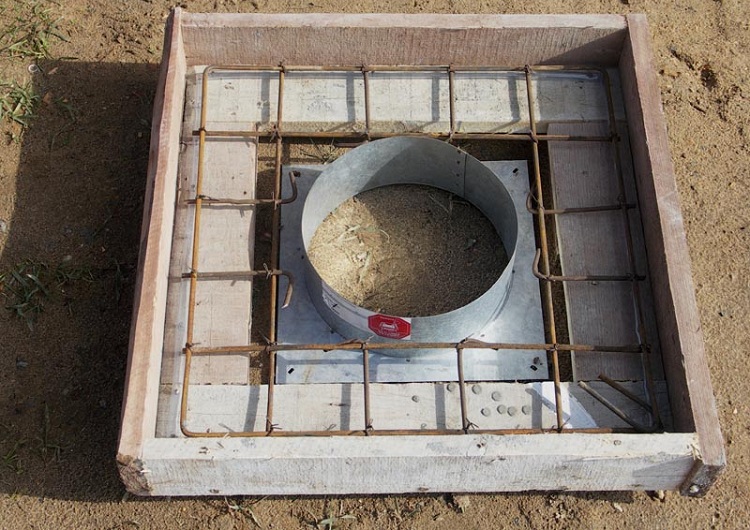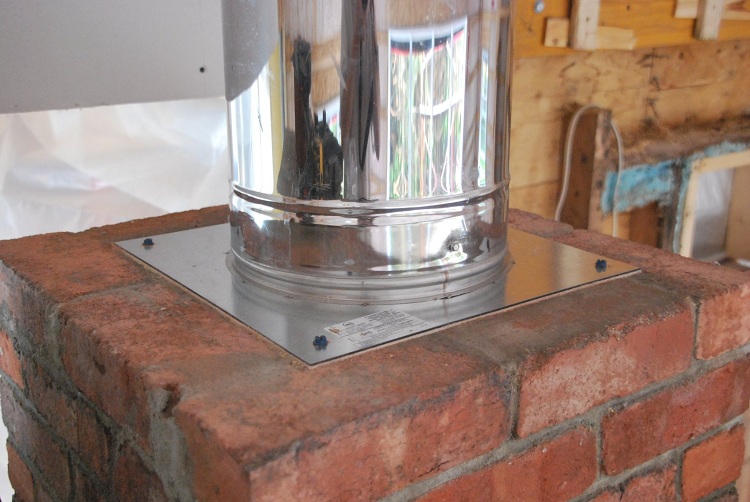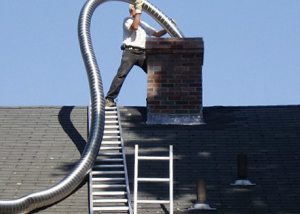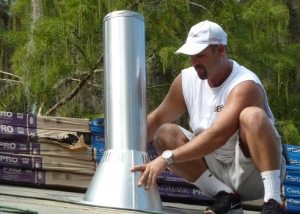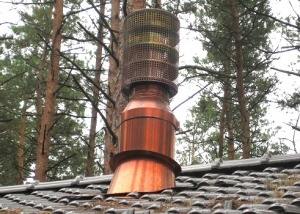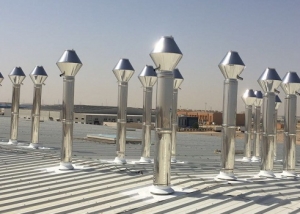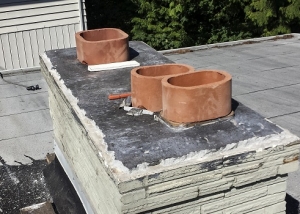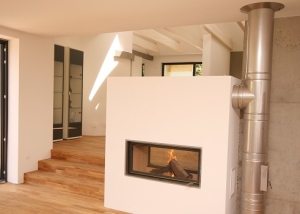The Russian stove, inside which firewood crackles, is a symbol of good family traditions and comfort. Masters of their craft passed the art of laying brick chimneys to new generations. Modern building materials and technologists provide the ability to install chimneys that can withstand corrosion. So, for example, when it becomes necessary to replace the upper part of the chimney design, a transition is made from a brick pipe to a sandwich.
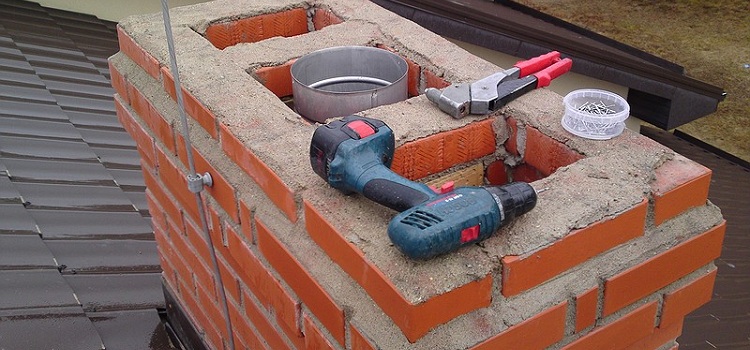
The transition from a brick channel to a metal channel may be needed when installing a new chimney, and when repairing an old
Content
Advantages and disadvantages of a chimney pipe sandwich
It is difficult to unequivocally answer the question of which pipe is better - a sandwich or a brick. The right choice is determined by many factors.
Firstly, the weight of the finished structure is of no small importance. After finding the necessary data in the directories and doing simple arithmetic calculations, you can get a very interesting figure: a brick pipe is more than 30 times heavier than a sandwich pipe. Of course, with the same height and diameter of the toxic gas exhaust system.
Secondly, the issue of design reliability. Any movement of a wooden structure or the foundation of a house from another more durable building material can in the worst case lead to a pipe break, and at best to crack it.
And thirdly, the complexity and the time of the construction of a brick pipe is much more time-consuming.
But there is a factor that deserves special mention. It concerns the aesthetic perception of a country cottage. For many homeowners, the question of whether to give preference to a brick pipe or a sandwich is not relevant: according to tradition, they choose the first option. But it can be realized only with a guarantee of structural strength, and if the furnace is on a strong foundation.
In general, developers highlight the following advantages of sandwich pipes for the removal of combustion products:
- small size;
- the ability to quickly and easily install a chimney without attracting furnace specialists;
- universality of application. The product can be displayed through walls or a roof;
- the presence of several layers prevents the formation of soot deposits and the formation of condensate;
- resistance to extreme conditions and aggressive environments (high temperature, chemicals, etc.).
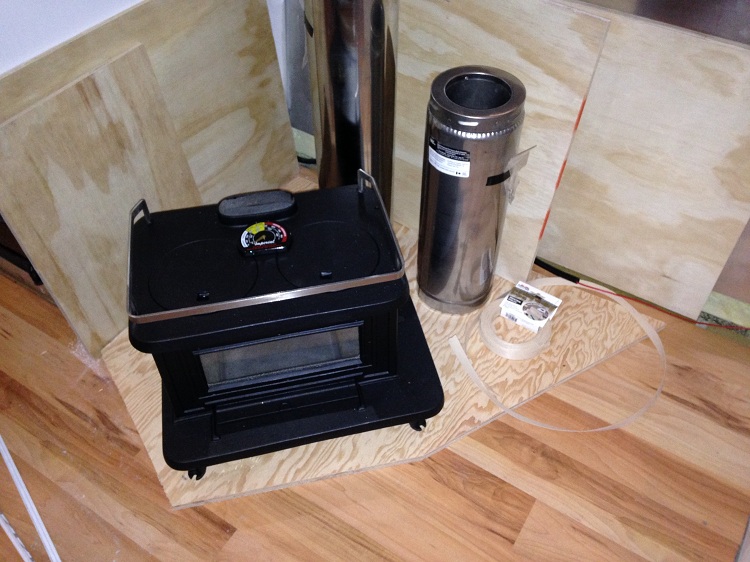
Corrosion-proof chimneys are durable, do not require protective treatment and are suitable for almost all types of boilers and furnaces
Of the disadvantages it is worth noting:
- high price;
- service life, as practice shows, is limited to 15 years;
- the possibility of reducing the tightness of the chimney system.
It is allowed to use these products in houses from any building material, but more often there is a need to install a sandwich pipe on a brick pipe.
To make the transition to a sandwich pipe with a brick, several methods are used.
- Realization of this task with the help of special square nozzles attached to a brick pipe.
- You can buy an adapter from a single-circuit design to a dual-circuit one.A wide area is installed on the brickwork. Single-loop design goes down.
Advice! The gaps formed during installation must be filled with non-combustible material.
Features of the transition with a special adapter
Such adapters are recommended to be purchased only in specialized stores of building materials. Although the price there is higher than in the market, it will be more reliable in terms of product quality. The following advantages are inherent in branded adapters:
- made of heat and acid-resistant high-quality stainless steel, as a result of which they can withstand short-term strong overheating without loss of durability;
- resistance to flue gases is minimized and turbulence in their flow is eliminated due to a smooth transition to a brick pipe sandwich;
- design allows reliable and easy sealing of joints;
- have an attractive appearance;
- some models may have various options. For example, turning the pipe at an angle of 45 degrees.
The adapter has a cylindrical shape on one side and a square shape on the other. Inside this element there is a layer of basalt wool. So require fire safety standards.
The sequence of steps for installing an adapter from a brick pipe to a sandwich pipe can be found below. In addition, certain nuances are presented there, the knowledge of which cannot be dispensed with.
- When mounting, use two of these elements. Fix one of them on the attic floor, and the second - to the ceiling directly above the brick chimney.
- Installation of a chimney sandwich is necessary in compliance with building codes. The inner surface of the two-layer pipe should be removed from the combustible structures by at least 38 centimeters. Fill this distance in full with non-combustible material.
- Sometimes a piece of steel is launched inside a brick channel.
- To seal the joints during installation, you will need sealants. They will be required, and if smoke passes not only the chimney, but also the stove itself. The material used to seal the cracks will prevent dust and combustion products from entering the room even through minor gaps. The sealant's resistance to high temperatures is guaranteed by the mark “Heat Resistant”.
- When moving to a circular cross-section from a rectangular, install the mounting pad, as well as the clamps. The formation of protrusions of the structure and the reduction of the cross section is not allowed. Otherwise, there may be a lack of traction, or, which is not better, it will act in the opposite direction.
How to install a sandwich pipe on a brick pipe without a factory adapter
It often happens that the adapter from a brick pipe to a sandwich pipe is simply not available for sale. You can make a quality transition in this case. However, it will take a lot of time. To do this, you have to follow these steps:
- cut a round hole in the brick base. Its size should be approximately equal to half the thickness of the brick. And the diameter slightly exceeds the value of this parameter of the inner part of the sandwich product;
- place the inside of the structure into the sawn hole.
Advice! Close the arising gaps with previously prepared oven solution.
- the foundation of the external part of the structure is a brick base. After installing one on the other, fill the junction with the same solution;
- the next step is the installation of the flue system. To do this, sequentially insert all components of the pipe into each other and fix;
- in the zone of passage of the chimney through the roof, fix the structure with metal profile cutoffs, screwing them with self-tapping screws. Conduct the entire operation to fix the created structure strictly along a plumb line.
We carry out the transition using a metal platform with a pipe
This method allows you to arrange the chimney without a special adapter.
Install in the following sequence:
- cut out the pad from the metal plate. Its size should match the configuration of the brick part. Make sure that the plate does not protrude beyond its edges;
- mark the places of attachment of the site to the brick opening. Check that the fasteners are not located at the edges of the brick or at the seams;
- Drill holes for self-tapping screws in pre-designated places on the metal plate. Make holes in the brickwork, but already under the dowels;
- insert into the holes made in the dowel;
- apply silicone refractory sealant to the masonry surface;
- install a metal pad on the sealant layer;
- with the help of screws, evenly pull it off with a brick surface;
- allowing the sealant to dry, proceed with the installation of part of the flue system from the sandwich pipe.
By installing a home-made adapter with a pipe, you will accelerate the installation of the chimney due to the fact that the pipes fit perfectly together through openings with an expanded and narrowed end.
Brick Pipe Fitting
This is another method of creating a smooth transition from brick to circular pipe. The essence of the technology is as follows:
- Dismantle your old pipe. A gradually tapering short superstructure is built on its remains with refractory bricks. It serves as an adapter. The restriction is formed so that a special element of the chimney part from the sandwich pipe can be installed on the superstructure. It is called a lower nozzle or scientifically - the transition is mono-thermo. This product is a solid base on which to install a barrel, recruited from pipe sections. To reduce the external size of the brick part of the chimney, the brick is placed on a long end (spoons).
- The inner surface of the superstructure must be plastered - a smooth surface minimizes resistance to gas flow.
- The mono-thermo transition is installed on top of the brick superstructure. For tightness and stability it is poured with a mixture of stones and cement mortar.
In brick chimneys, it is often necessary to dismantle only the outer part, since the masonry located in the house is, as a rule, in satisfactory condition. And this factor due to the low weight and small length of the sandwich allows its installation without a mono-thermo transition.

